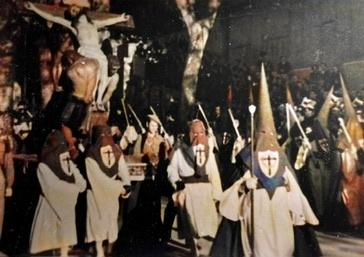How did the towers coordinate their signals at night compared to during the day?
Similar Topics
signal coordination
night signaling
semaphore communication
visual signals
illuminated signals
lantern signals
communication timing
long-distance messaging
The towers coordinated their signals differently at night compared to during the day primarily due to visibility and the need for effective communication over distance. During daylight hours, visual signals such as flags or semaphore arms were used, relying on clear sightlines and sufficient natural light. Operators would position these flags or move semaphore arms in specific patterns to convey messages, which could be observed by other towers or signal stations. This daylight signaling allowed for relatively straightforward communication, as the signals were designed to be easily distinguishable against the bright sky.
At night, however, the absence of natural light necessitated the use of illuminated signals to maintain communication. The towers employed lanterns, lamps, or other light sources to replicate the semaphore signals they used during the day. These lights were often covered with colored filters or arranged in particular patterns to create distinguishable signals that could be seen from afar. To ensure clarity, the light signals had to be carefully timed and sometimes included sequences or flashes to represent letters or instructions, as steady lights could be confusing or lost in the darkness.
Furthermore, coordination at night required more meticulous timing and precise observation because reduced visibility and factors such as fog or weather conditions complicated the process. Operators needed to be trained to recognize the light signals quickly and to adjust for any distortions caused by distance or atmospheric interference. In some cases, the towers would use a combination of light flashes and sound signals like bells or horns to confirm message receipt, enhancing the reliability of communication when visual confirmation was difficult.
Overall, the transition from daylight to nighttime signaling relied on adapting the core principles of semaphore communication to suit the limitations of darkness. The use of lanterns and patterned lighting allowed the towers to maintain a continuous network of messages, crucial for navigation, military coordination, or early warning systems before the advent of modern electronic communication. This adaptability highlights the ingenuity and precision involved in historic long-distance communication methods.
At night, however, the absence of natural light necessitated the use of illuminated signals to maintain communication. The towers employed lanterns, lamps, or other light sources to replicate the semaphore signals they used during the day. These lights were often covered with colored filters or arranged in particular patterns to create distinguishable signals that could be seen from afar. To ensure clarity, the light signals had to be carefully timed and sometimes included sequences or flashes to represent letters or instructions, as steady lights could be confusing or lost in the darkness.
Furthermore, coordination at night required more meticulous timing and precise observation because reduced visibility and factors such as fog or weather conditions complicated the process. Operators needed to be trained to recognize the light signals quickly and to adjust for any distortions caused by distance or atmospheric interference. In some cases, the towers would use a combination of light flashes and sound signals like bells or horns to confirm message receipt, enhancing the reliability of communication when visual confirmation was difficult.
Overall, the transition from daylight to nighttime signaling relied on adapting the core principles of semaphore communication to suit the limitations of darkness. The use of lanterns and patterned lighting allowed the towers to maintain a continuous network of messages, crucial for navigation, military coordination, or early warning systems before the advent of modern electronic communication. This adaptability highlights the ingenuity and precision involved in historic long-distance communication methods.
🧩 Related Questions
Related Question
What were the key decentralization efforts in Mallorca during the late 19th century, and how did they affect local autonomy?
Related Question
In what ways do the deep roots of Mallorca’s ancient olive trees benefit the island’s soil and water systems?
Related Question
What are the best photography spots in Mallorca to capture the spring wildflower scenery?

